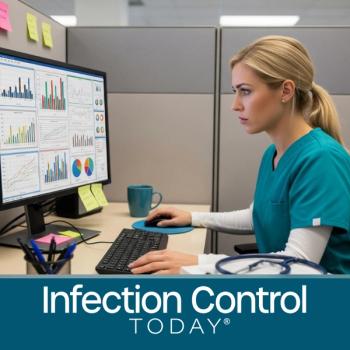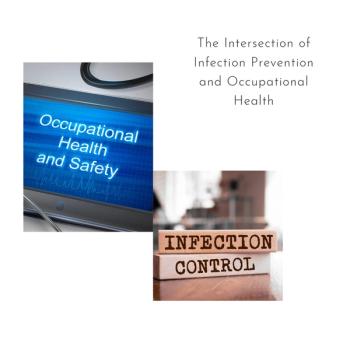
Preventing the Spread of COVID-19 While Keeping Kids in School: A Case Study
The benefits of a systematic, multi-layered approach utilizing various methods to prevent and mitigate the spread of COVID-19 to keep children in school.
By law, children need to be in school, but this becomes difficult when facing a global pandemic that requires public health preventive measures, including social distancing, improving air quality, masking, isolation, and quarantine. Children continue to lose valuable time devoted to learning, and this will continue to have long-term effects. Schools must be a safe environment for children to learn and grow, as well as for the employees and staff who help educate and nurture them. Although challenging, finding a balance between public health interventional measures in an education infrastructure is accomplishable, and indeed imperative.
For the occupational health nurse (OHN) who oversees the school nurses and Health Service Department in the school district in Swampscott, Massachusetts, this dilemma was all too real. District students faced many challenges and had already lost too much time devoted to learning. They needed to be back in school as soon as possible for their social, emotional, and educational wellbeing. By implementing a multi-layered approach, Swampscott School District found that using various methods of mitigation helped prevent the spread of COVID-19 in their school.
Swampscott’s approach is based on the “Swiss cheese” preventive measures created by Ian M. Mackay, a virologist at the University of Queensland in Brisbane, Australia. The thought was if the district could simply layer as many mitigations as possible in the schools, it would help decrease and prevent the spread of COVID-19 in their buildings and keep their students and staff safe. Swampscott’s primary mitigation layers consisted of improved air quality, mask mandates, emphasizing and promoting the importance of vaccinations and boosters, having a robust COVID-19 testing program in schools, vigilantly monitoring COVID-19 symptoms in students and staff, creating multi-layered data collection platform of tracking trends, and collaborating with local Health Department & Board of Health.
Improving air quality was of paramount importancefor their faculty, especially when factoring in how old their school buildings are. A large portion of their federal reopening grant went to help mitigate this problem. Spending over $38,000 on air purification units to increase the air quality of Swampscott’s lunchrooms and classrooms became one of the first layers of mitigation they implemented. Similarly, educating their employees on the benefits of opening windows and letting fresh air into the rooms, which produces better air quality. Airflow was particularly important during activities with a higher risk of transmissions, such as eating snacks or lunch. These activities were of concern because students would be unmasked, increasing the risk of spread. Spending grant money on air purifiers, and towards outdoor tents and seating to create outdoor learning environments was beneficial in decreasing viral spread. The district encourages their faculty and staff to utilize these valuable spaces as weather permits to help mitigate future spread.
In August 2021, the Massachusetts Board of Elementary and Secondary Education gave their state commissioner the authority to require masks for public school staff and students (ages 5 and above) in all grades through at least October 1, 2021; this was then extended to February 28, 2022. Prior to this directive, the Department of Elementary and Secondary Education (DESE) relegated any
Swampscott School District created a data collection platform to help monitor trends of viral spread and the effect of implemented mitigation strategies. The Google form shown in
Figure 1 was designed to be completed by school nurses who were assigned to triage and conduct contact tracing of positive and symptomatic students and staff. This form was 1 of the essential steps in the order of operations the district developed when it determined it had a positive infectious individual in school, shown in Figure 2.
Responses from this form were enteredinto a spreadsheet that enabled schools to monitor trends, determine where common exposures were taking place, see how many students and staff had tested positive for COVID-19, monitor for common symptoms, and track student and staff vaccination status and breakthrough cases, shown in Figure 3.
Monitoring these trends helped the district validate decisions regarding increasing or decreasing mitigation strategies during the Delta and Omicron surges. As an example, the district noticed an increased trend in COVID-19–positive students who were exposed during extracurricular activities such as sports. Because of this increase, the district was able to proactively reinforce an additional mitigation strategy, requiring those individuals to participate in a COVID-19 surveillance testing program. By testing the students weekly, the district was able to catch cases before symptoms started and prevent further viral spread, thus decreasing the number of students who needed to be isolated at home and be absent from school or miss out on after-school activities.
The school district’s nurses struggled with an influx of calls and emails during the height of the Delta and Omicron surges. Having a data collection platform was beneficial to the district because it created a disclosure form that individuals could use to report their symptoms, COVID-19 test results, and close contact status to the school district’s nurses. This influx of calls and email was accentuated because individuals could not reach their health care providers or the local Health Departments once the Massachusetts Community Tracing Collaborative closed. The primary responsibility of providing isolation and quarantine guidelines now shifted toschool nurses. Creating a systematic approach to collecting this information enabled the school district to centralize and systematically handle the enquiries. Once families filled out the disclosure form, the auto-response would instruct the family member to stay home and await further instructions. Each morning an administrative assistant would review the spreadsheet to quickly determine the individual’s status based on the answered questions, and then email the appropriate instructions. This decreased the amount of time it took to give instructions to the families and helped ensure students and staff were not coming into school when they were infectious. It also helped monitor the shift of prominent symptoms and helped in the detection of new strains of the virus.
Massachusetts Department of Elementary and Secondary Education (DESE), the Executive Office of Health and Human Services, and the Department of Public Health developed and funded the
In January 2022, Swampscott School District decided to add an additional testing program (at-home antigen testing) offered and funded by DESE to the district. At-home antigen testing added another layer of surveillance testing for their students and staff. All students and staff were eligible for this testing. Each individual who opted into this new form of testing would receive 2 antigen tests bi-weekly from the school and asked to take the test on a specific assigned day of the week or when they were symptomatic. Individuals were asked to report the results to the school disclosure form mentioned before. The benefit to this additional layer of testing is that it replaced the contact tracing in their district and would decrease the workload on the nurses.
Vaccination became another essential preventive layer. In November 2021, before the FDA and Centers for Disease Control and Prevention approved the Pfizer vaccine for students ages 5-11, Swampscott School District teamed up with a 3rd party vaccination company that came into the schools to vaccinate staff, students, and their families. Each clinic had 200 appointments and they were able to accept walk-ins. By making the vaccination clinics accessible in the schools, families would be more inclined to become vaccinated. Also, this benefited Swampscott’s students who traveled to Swampscott from Boston. These students were able to receive their vaccination before returning home on the bus. The accessibility of clinics became imperative in helping to quickly increase the towns’ vaccination rate. In total, Swampscott School District was able to provide 7 clinics offering the 2-dose series of Pfizer and booster doses of either Moderna or Pfizer.
Swampscott’s overall goal was to keep students and staff safe with significant consideration to minimize the disruption to learning for students and their families. This was accomplished with layers of mitigation strategies that were applied in the district. With every added layer, another barrier was created to protect both students and staff, keeping them safe in the district’s buildings and allowing the prioritization of in-person learning.
Amanda Mulcahy, RN, BSN, has committed her career as a medical professional for over 15 years. She joined the Swampscott Public School System as the Occupational Health Nurse (OHN) in Swampscott, Massachusetts, in 2020. In her role, she oversees the Health and Safety of the district, including the District's Health Service Department (school nursing) for five schools serving grades Pre-K - 12. Prior to joining Swampscott Public Schools, she was a nurse with Mass General Brigham–Salem Hospital. She completed her nursing degree at Salem State University School of Nursing and is an active member of Health Watch USA, American Association of Occupational Health Nurses, and National Association of School Nurses.
Newsletter
Stay prepared and protected with Infection Control Today's newsletter, delivering essential updates, best practices, and expert insights for infection preventionists.






